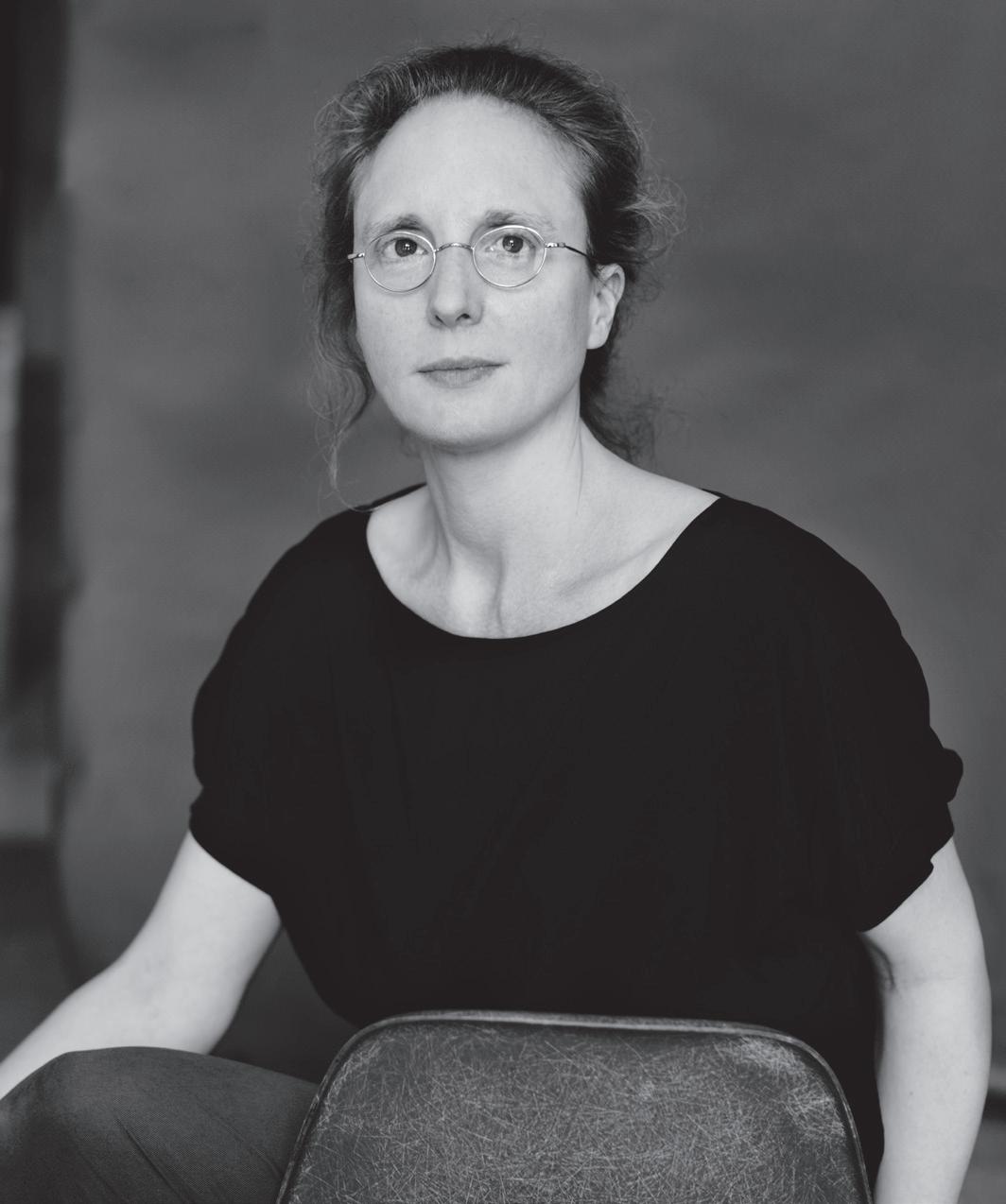SAUNDERS
blaauw / sinjo
(2004/2022)
for Solo Trumpet in C


blaauw / sinjo
(2004/2022)
for Solo Trumpet in C

ZI G · L ONDO N · NE W YOR K
And with my thanks to Marco Blaauw to whom the original “Blaauw” is dedicated
sinjo = син; Bulgarian for ‘blue’
blaauw = blauw; Dutch for ‘blue’
“As it deepens towards black…. (blue) becomes like an inÞnite self-absorption which has, and can have, no end. The brighter it becomes, the more it loses its sound, until it turns into silent stillness and becomes white. “ Kandinsky, On the spiritual in Art, 1911-12.
“We love to contemplate blue, not because it advances to us, but because it draws us after it.” Goethe, Farbenlehre.
“Blue transcends the solemn geography of human limits. The blood of sensibility.
An inÞnite possibility.
Becoming tangible.
Pray to be released from image.
To be an astronaut of the void.
Blue is darkness made visible.
The darkness comes in with the tide. “
Derek Jarman, excerpts from Chroma - A book of colour, 1994, Vintage.
Zum Schwarzen sinkend…. wird (blau) eine unendliche Vertiefung in die ernsten Zustände, wo es kein Ende gibt und keines geben kann…. ….Je heller also, desto klangloser, bis es zur schweigenden Ruhe übergeht - weiß wird. Kandinsky, Über das Geistige in der Kunst (Kap. VI, Formen und Farbensprache)
Wie wir einem angenehmen Gegenstand, der vor uns ßieht, gern verfolgen, so sehen wir das Blaue gerne an, nicht weil es auf uns dringt, sondern weil es uns nach sich zieht. Goethe, Farbenlehre.
Blau Transzendiert die Feierliche Geographie menschlicher Grenzen. Das Blut der EmpÞndlichkeit ist Blau. Eine unbegrenzte Möglichkeit.
Die greifbar wird.
Bete darum, von Bild gelöst zu werden.
Um ein Astronaut im leeren Raum zu sein.
Blau ist unsichtbar gemachte Dunkelheit.
Die Dunkelheit kommt mit der Flut.
Derek Jarman, Chroma: Ein Buch der Farben, Merve Verlag 1995.
For trumpet in C (single bell)
Mutes: wawa/harmon and cup (with stem).

For a smooth transition between harmon and wawa timbres, use wawa mute with stem in (wawa) or out (harmon).
The cup mute needs to be adjustable with a stem, which can be played when open or closed. It can also be removed easily and silently.
Remove wawa mute while playing. Use a wawa or cup mute that can be inserted and removed noiselessly.
Trill 1 or 2 fingers very fast directly in front of wawa mute.
Air – sounds a semitone higher than ordinary tone.
Gently add air to the ordinary sound – this dark timbre is called a sub-tone in jazz.
Split tones (at given fingerings) caused by difference in tension between upper- and under-lip.
Under-lip aims for higher note of interval, upper-lip aims for lower tone. Results in fast oscillation between the two notes.
Other notes may resonate with the interval, giving the impression of a chord. The fifth may de-tune becoming a tritone.
Very fragile and beautiful.
With wawa or harmon mutes, or “1/2-valve” for clear contrast of timbre.
Glissando down the harmonic series at the given fingering. Lowest “tones” are well below normal range.
Flutter-tongue.
Continuous and even transition from one timbre to the next.
Accidentals raised or lowered by 1/4-tone. Raised by an 1/8th-tone.
All microtonal accidentals should be regarded primarily as timbral and melodic inflections.
Crescendo and decrescendo from and to nothing.



Rebecca Saunders

Rebecca Saunders (b. 1967) studied with Wolfgang Rihm at the Musikhochschule in Karlsruhe, Germany, and for a doctorate in composition with Nigel Osborne at Edinburgh University. She lives in Berlin. Saunders’ numerous composition prizes include three Royal Philharmonic Society Music Awards, two BASCA British Composer Awards and the 2019 Ernst von Siemens Music Prize. Her works have been performed at festivals including the Huddersfield Festival, the Berlin Biennale and the Darmstadt International Summer Course. In 2009 she became a member of the Berlin Academy of Arts. Saunders’ works include chroma, for chamber groups distributed throughout the performance space; void, a concerto for percussion duo and orchestra; and Yes, a spatial performance for soprano, 19 soloists and conductor.
Rebecca Saunders (*1967) studierte Komposition bei Wolfgang Rihm an der Musikhochschule Karlsruhe und promovierte an der Edinburgh University bei Nigel Osborne. Sie lebt in Berlin. Saunders wurde für ihr Schaffen vielfach ausgezeichnet, u. a. mit drei Royal Philharmonic Society Music Awards, zwei BASCA British Composer Awards sowie mit dem Ernst von Siemens Musikpreis 2019. Ihre Werke erklangen bei zahlreichen Festivals, wie dem Huddersfield Festival, der Berliner Biennale und den Darmstädter Ferienkursen für Neue Musik. 2009 wurde sie zum Mitglied der Berliner Akademie der Künste ernannt. Zu ihren Werken zählen chroma für räumlich verteilte Kammergruppen, ein Konzert für Schlagzeugduo und Orchester mit dem Titel void sowie die Raumperformance Yes für Sopran, 19 Solisten und Dirigent.